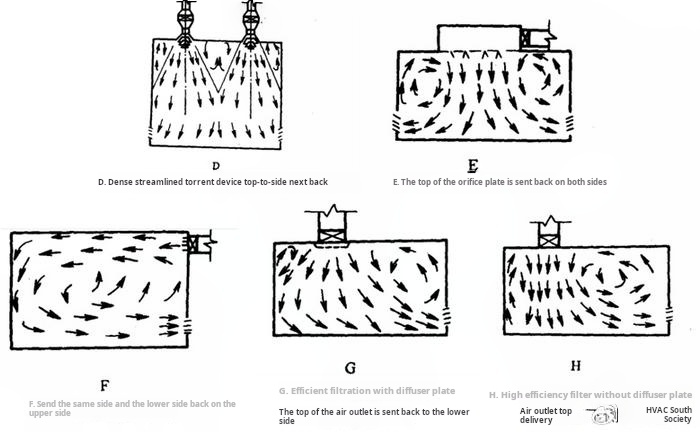Clean Room Air Changes
Essential Guide to Air Changes Per Hour (ACH/ACPH) for Controlled Environments
Introduction to Air Changes in Cleanrooms
Air changes per hour (ACH) are a critical metric in Cleanroom design and operation. This value indicates how many times the total volume of air in the cleanroom is replaced within an hour. Depending on the CleanRoom Classification, the required ACH can vary significantly, impacting contamination control.
Why ACH Matters
Proper air change rates ensure particulate removal, temperature control, and humidity management in sensitive environments.
Key Applications
Critical for Semiconductor manufacturing, pharmaceutical production, biotechnology research, and medical device assembly.
Classification Standards and ACH Requirements
According to ISO 14644-1, cleanrooms are classified based on the maximum allowable particulate concentration:
| Cleanroom Class | Minimum ACH | Particle Size Limit | Common Applications |
|---|---|---|---|
| Class 1 | 500+ | ≤ 10 particles ≥0.1μm/m³ | Semiconductor manufacturing |
| Class 10 | 400 | ≤ 10 particles ≥0.5μm/m³ | Sterile pharmaceutical production |
| Class 100 | 200-600 | ≤ 100 particles ≥0.5μm/m³ | Medical device manufacturing |
| Class 1000 | 70-160 | ≤ 1000 particles ≥0.5μm/m³ | Optics manufacturing |
This rigorous standard ensures that the environment remains suitable for critical operations, such as semiconductor manufacturing or sterile pharmaceutical production.
Factors Influencing Air Change Rates
Several factors can influence the optimal ACH for A CleanRoom:
- Room size: Larger spaces require higher air exchange rates
- Operations conducted: Processes generating more particles need higher ACH
- Personnel count: More occupants increase contamination risk
- Equipment heat load: Affects temperature control requirements
- Contamination control requirements: Varies by industry standards
Design Consideration
Larger rooms or those with more complex processes may require higher ACH to maintain cleanliness, adhering to specifications in relevant guidelines.
Air Filtration Systems
The effectiveness of air changes is heavily reliant on the filtration systems employed.
HEPA filters capture 99.97% of particles ≥0.3 micrometers, commonly used in cleanrooms. ULPA filters provide even higher efficiency.
System Efficiency
Filter efficiency combined with correct ACH ensures cleanroom environments meet stringent industry standards.
Cleanroom Air Plenum
Specialized plenum systems ensure uniform air distribution and pressure control throughout the cleanroom environment.
How to Calculate Air Changes Per Hour (ACPH)
ACPH Formula
Where:
- ACPH = Air Changes Per Hour
- CFM = Cubic Feet per Minute (airflow rate)
- Room Volume = Length × Width × Height (in feet)
Example Calculation
For a cleanroom with:
- Volume = 1,000 cubic feet
- Airflow rate = 500 CFM
ACPH = (500 × 60) / 1,000 = 30,000 / 1,000 = 30
Visualization of Airflow

Airflow Diagram: Cleanroom Air Circulation Patterns
Relevant Standards and Guidelines
ISO Standards
- iso 14644-1: Classification of Air Cleanliness
- iso 14644-2: monitoring Cleanroom Performance
- ISO 14644-3: Test Methods
Regulatory Guidelines
- FDA: Sterile Drug Products by Aseptic Processing
- GMP: Good Manufacturing Practice
- CEN EN 12312-2: Cleanroom Performance
Compliance Requirements
Facilities must document their ACPH measurements and compliance with ISO 14644 standards. This documentation is crucial for regulatory inspections and ensuring ongoing adherence to cleanliness requirements.
Regular monitoring and validation are essential to maintain cleanroom classifications and ensure consistent air quality.
Clean Room Air Changes Guide
Comprehensive reference for cleanroom design, operation, and compliance
Based on ISO 14644 standards and industry best practices
© 2023 Cleanroom Solutions | All rights reserved
 +86 18186671616
+86 18186671616 Jason@cleanroomequips.com
Jason@cleanroomequips.com
 MENU
MENU



